|
EXPOS4PRODUCTS |
|
Projector Bulbs
Comparable performance
PureGlare lamp module gives the great
quality of overall performance, including brightness, duration,
etc.
Fast Ship
The lamps will be shipped to customers
within 1 working days after the order is confirmed.
Best price
The best price offered by PureGlare, fulfilling the market needs
of high quality lamp modules with lower and affordable price. We
make every effort to provide you with the best replacement lamp
prices in North America. If you need a lamp that you have seen for
less elsewhere, please take a minute to fill out the form and a
Lamp Expert will be in touch with you shortly.
3M, AKAI, CANON, DELL, EIKI,
EPSON,HITACHI, HP, INFOCUS,JVC, MITSUBISHI,NEC, PANASONIC,
PHILIPS, RCA,SAMSUNG, SANYO, SHARP, SONY,TOSHIBA
PureGlare Projector / TV Lamps |
|
DLP Projectors,
LCD Projectors, and Fastfold Screens
Request a Quote
 |
|
|
Los Angeles Area, San Francisco Area, San Diego Area, Salt
Lake City
More Cities
Call
Request a Quote |
|
|
|
|
|
Throw Distance Calculator |
|
10000 Lumens 1080p HD Large Venue DLP Projector 16x9
Fastfold Screens
10,000
Lumen DLP Projector
Rentals
12,000 Lumen LCD Projector
Rentals |
|
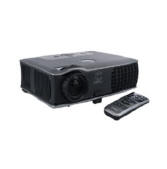 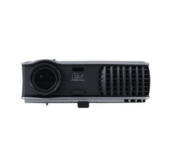 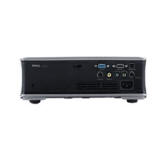 |
Dell 2400MP
Projector
Bright 3,000 ANSI Lumens (Max)1
Excellent high contrast ratio of 2100:1 (Full on/Full off)
5.5 lbs. (2.5kg) and only 4" (101mm) high
Integrated zoom lenses and automatic vertical keystone correction
DLPTM LVDS technology from Texas Instruments
Native XGA (1024 x 768) resolution with auto synchronization to UXGA
(1600 x 1200)
Eco-mode option for quiet operation and extended lamp life (up to 2500
hours)
Full connectivity — Supports PC, S-video, composite video, component
video via VGA and RS-232 connectors
Supports full range of television and video standards, including NTSC,
NTSC 4.43, PAL, PAL-N, PAL M, SECAM and HDTV (480i/P, 576i/P, 720P,
1080i)
Up to 3-years limited warranty23 with Advanced Exchange4 Service5 (90
days on bulb)
Includes all relevant cables, a remote and a drop-tested hard carrying
case.
What is DLP® LVDS Technology?
DLP technology is an all digital chip that uses millions of micro
mirrors that reflect light to create lifelike, razor-sharp pictures
with vibrant colors and high contrast ratios in projectors. Thanks to
the DLP chip's architecture and unparalleled response time, it's ideal
for sports, fast action video and gaming. The Dell 2400MP incorporates
the latest generation of DLP technology with LVDS data transmission
technology which increases the switching speed of the DLP chip for
enhanced video performance. The 2400MP combines super high brightness,
DarkChip3TM and BrilliantColorTM the latest in color reproduction
technology from Texas Instruments to deliver the ultimate in projector
performance.
|
|
|
|
Rent for
Live Events, Media Environments, Stage Sets, Exhibits or
Themed Environments, Meetings, Corporate Theater,
Promotions, Parties, Awards & Entertainment Events, Public
Relations & Industry Press Events, Road Shows, Traveling or
Permanent Shows, Museums, Film & Television, Sponsorship
Presentation, Special Environments for all occasions.
We are a full service audio, visual, video, lighting,
staging, and computer rental company. Serving clients
nationally, we offer one of the most comprehensive
inventories in the industry for small businesses events,
conventions, tradeshows, expositions, event planners,
training seminars, and live entertainment shows. With the
latest in technology from leading manufacturers, we ensure
your event will be a total success.
Rent
Tradeshow
AV
Equipment |
These are some of the following
specifications that may make your decision in what projector is
right for you
1. Brightness (Ansi Lumens):
Projectors come in a wide range of light output. All other
things being equal, the brighter the projector, the more it
costs. When it comes to "optimum brightness" the rule is simple:
Get the brightest projector you can afford.
Brightness is measured in ANSI (American National Standards
Institute) lumens: the brighter the projector, the higher the
ANSI lumen rating.
In today’s market, projectors can be grouped by ANSI lumen
output as follows:
Less than 1000 lumens – these are the lowest light-output
projectors available today, and they are typically the least
expensive. If you are on a tight budget, there are a number of
products in this category that may be perfect for your needs.
Keep in mind that the low light output means that you will want
to make your presentations in a dark or dimly lit room so that
the image on the screen is not washed out by ambient room light.
None Available as they do not support many of the features need
in today's computers
1000 to 2000 lumens – this lumen range is a step up in
performance and price. There are many SVGA and XGA products in
this class to choose from. These machines are suitable for
normal business conference room, classroom use and for home
theater use. Presentations should be done with the room lighting
reduced somewhat for best screen viewing, although dimly lit
room is usually best.
2000 to 3000 lumens – this represents the high-performance range
of the portable and semi-portable projectors. Products in this
class are suitable for large conference rooms, Large classrooms
and Really lit Home theater. They offer more flexibility in
terms of ambient room light, since the image is bright enough
that a reasonable amount of room light can be tolerated without
washing out the image. They also offer more flexibility in terms
of audience size since they can illuminate a larger screen
without much loss of image quality.
3000 lumens and up – the ultra-bright projectors are in several
performance classes unto themselves, ranging from 3000 up to
12000 lumens or more. Prices of these products also cover a wide
range depending on other performance characteristics. They are
used in a variety of large venue applications, including board
rooms, conference rooms, training rooms, auditoriums, churches,
concerts, nightclubs, and so forth. |
|
|
The Dell™ 2300MP
DLP Projector is an ideal combination of high brightness and XGA
resolution. With 2300 ANSI lumens (max)1 brightness and a super
high 2100:1 (full on/full off) contrast ratio, the Dell™ Projector
projects bright, captivating and stunning images from anywhere in
a mid-sized room. This advanced projector features DLP™ DDR
technology powered by the DDP2000 and native XGA (1024x768 pixels)
resolution with auto sync to UXGA for sharp, clear projections.
With 1.2x manual zoom and manual vertical keystone correction, the
Dell™ 2300MP helps you project that perfect picture. It provides
incredible connectivity with support for PC, multiple video and
RS-232 inputs and a full range of television and video standards —
including NTSC, PAL, SECAM and HDTV (480i/P, 576i/P, 720P, 1080i).
To preserve lamp life and improve acoustics, an Eco-mode is
available which allows 2500 hours of life from the lamp, and a
sound level of only 34 dBA. The multi-language On-Screen Display (OSD)
allows image adjustments and the ability to change a variety of
settings. Sporting a ventilation-optimized design, the Dell™
2300MP Projector easily blends into conference rooms, classrooms,
and homes. It comes complete with a sleek hard carrying case which
allows easy, no hassle transportation from room to room and a full
feature IR remote control for those times when you need to be in a
different part of the room from the projector.
|
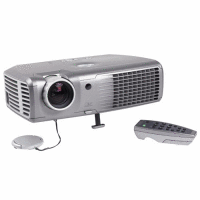 |
|
|
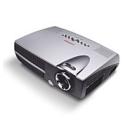 |
The iPAQ MP4800 DLP Projector delivers the
highest performance available in any micro-portable projector with a
style that will compliment any conference room. The iPAQ MP4800
utilizes Digital Light Processing (DLP) to deliver bright, crisp XGA-resolution
(1024 X 768) images and a superior 800:1 contrast ratio. Mobile users
needing to incorporate multimedia into their presentations will find
that iPAQ MP4800 includes integrated audio, video, stereo sound and
High-Definition TV support. The iPAQ MP4800 delivers all this
performance in a style that adapts to any conference room. The
ultra-quiet unit operates at less than 36 decibels, while the
versatile form factor can be used as a tabletop projector, set on a
tripod or mounted to the boardroom ceiling. The unit also features a
Lamp-Saver mode, which can extend bulb life up to 50 percent and lower
the noise output to 34 decibels, yet still delivers incredible
brightness. |
|
|

|
Panasonic
PT-D5600U 5000 Ansi Lumens XGA DLP Projector
5,000 ANSI Lumens - DLPThe PT-D5600U 5000 ANSI Lumens XGA DLP
Projector from Panasonic delivers spectacular image reproduction. With
5000 ANSI Lumens brightness and 2000:1 (on/off) contrast ratio, this
portable projector projects bright, captivating and stunning images
that are sure to wow your audience. It features DLP technology and
1024x768-pixel resolution for sharp, clear projections. Vivid Control
technology enhances the color segment areas of the color wheel results
in sharp, clear color reproduction. 3D Color Correction corrects color
saturation, hue, and brightness. Correction is done automatically by
the processor, resulting in natural image reproduction. An airflow
sensor has been added to the air intake section to quickly detect
reductions in the intake airflow due to a clogged filter or other
reasons. The use of two lamp systems enhances brightness and
eliminates the need to interrupt a presentation if a lamp burns out
(in dual lamp operation mode). It features side access to dust filter
and back-panel access to lamps for easy maintenance. Liquid cooled and
sealed DLP engine ensures efficient operation even in harsh
environments and virtually eliminates issues with the light source.
Mechanical lens shutter minimizes annoying light leakage when the
projector is on standby or temporarily not in use, such as during a
meeting. Anti-theft features help protect the projector from
unauthorized use, including a password protection function and an
operation key lock function that disables the control buttons on the
main unit. It is ideal for use in conference rooms, auditoriums,
theaters, and houses of worship. More information
5,200 Lumen NEC DLP Projector
BARCO 10,000 lumen DLP |
|
|
DISPLAY INDUSTRY NEWS AND TECHNICAL INFORMATION
|
The Great Technology War: LCD vs. DLP
Evan Powell, July 7, 2003
Introduction
If you are new to the world of digital projectors, you won't have to
shop around the market very long before discovering that "LCD" and "DLP"
somehow refers to two different kinds of projectors. You might not even
know what LCD and DLP are before asking the obvious question "which one
is better?"
The answer is simple. Sort of. LCD and DLP each have unique
advantages over the other. Neither one is perfect. So it is important to
understand what each one gives you. Then you can make a good decision
about which will be better for you.
By the way, there is a third very significant light engine technology
called LCOS (liquid crystal on silicon). It is being developed by
several vendors, most notably JVC and Hitachi. Several outstanding home
theater projectors have been manufactured with this technology, and
JVC's LCOS-based
DLA-SX21
is currently on our list of
Highly Recommended Home Theater Projectors. However the discussion
of LCOS technology is beyond the scope of this article.
For more on LCOS
click here.
The Technical Differences between LCD and DLP
LCD (liquid crystal display) projectors usually contain three
separate LCD glass panels, one each for red, green, and blue components
of the image signal being fed into the projector. As light passes
through the LCD panels, individual pixels ("picture elements") can be
opened to allow light to pass or closed to block the light, as if each
little pixel were fitted with a Venetian blind. This activity modulates
the light and produces the image that is projected onto the screen.
DLP ("Digital Light Processing") is a proprietary technology
developed by Texas Instruments. It works quite differently than
LCD. Instead of having glass panels through which light is passed, the
DLP chip is a reflective surface made up of thousands of tiny mirrors.
Each mirror represents a single pixel.
In a DLP projector, light from the projector's lamp is directed onto
the surface of the DLP chip. The mirrors wobble back and forth,
directing light either into the lens path to turn the pixel on, or away
from the lens path to turn it off.
In very expensive DLP projectors, there are three separate DLP chips,
one each for the red, green, and blue channels. However, in DLP
projectors under $20,000, there is only one chip. In order to define
color, there is a color wheel that consists of red, green, blue, and
sometimes white (clear) filters. This wheel spins between the lamp and
the DLP chip and alternates the color of the light hitting the chip from
red to green to blue. The mirrors tilt away from or into the lens path
based upon how much of each color is required for each pixel at any
given moment in time. This activity modulates the light and produces the
image that is projected onto the screen.
The Advantages of LCD Technology
One benefit of LCD is that it has historically delivered better color
saturation than you get from a DLP projector. That's primarily because
in most single-chip DLP projectors, a clear (white) panel is included in
the color wheel along with red, green, and blue in order to boost
brightest, or total lumen output. Though the image is brighter than it
would otherwise be, this tends to reduce color saturation, making the
DLP picture appear not quite as rich and vibrant. However, some of the
DLP-based home theater products now have six-segment color wheels that
eliminate the white component. This contributes to a richer display of
color. And even some of the newer high contrast DLP units that have a
white segment in the wheel are producing better color saturation than
they used to. Overall however, the best LCD projectors still have a
noteworthy performance advantage in this area.
LCD also delivers a somewhat sharper image than DLP at any given
resolution. The difference here is more relevant for detailed financial
spreadsheet presentations than it is for video. This is not to say that
DLP is fuzzy--it isn't. When you look at a spreadsheet projected by a
DLP projector it looks clear enough. It's just that when a DLP unit is
placed side-by-side with an LCD of the same resolution, the LCD
typically looks sharper in comparison.
A third benefit of LCD is that it is more light-efficient. LCD
projectors usually produce significantly higher ANSI lumen outputs than
do DLPs with the same wattage lamp. In the past year, DLP machines have
gotten brighter and smaller--and there are now DLP projectors rated at
2500 ANSI lumens, which is a comparatively recent development. Still,
LCD competes extremely well when high light output is required. All of
the portable light cannons under 20 lbs putting out 3500 to 5000 ANSI
lumens are LCD projectors.
The Weaknesses of LCD Technology
LCD projectors have historically had two weaknesses, both of which
are more relevant to video than they are to data applications. The first
is visible pixelation, or what is commonly referred to as the "screendoor
effect" because it looks like you are viewing the image through a
screendoor. The second weakness is not-so-impressive black levels and
contrast, which are vitally important elements in a good video image.
LCD technology has traditionally had a hard time being taken seriously
among some home theater enthusiasts (understandably) because of these
flaws in the image.
However, in many of today's projectors these flaws aren't nearly what
they used to be. Three developments have served to reduce the screendoor
problem on LCD projectors. First was the step up to higher resolutions,
first to XGA resolution (1,024x768), and then to widescreen XGA (WXGA,
typically either 1280x720 or 1365x768). This widescreen format is found,
for example, on the
Sanyo PLV-70
and Epson
TW100, (two more products currently on our Highly Recommended
list). Standard XGA resolution uses 64% more pixels to paint the image
on the screen than does an SVGA (800x600) projector. The inter-pixel
gaps are reduced in XGA resolution, so pixels are more dense and less
visible. Then with the widescreen 16:9 machines, the pixel count
improves by another quantum leap. While an XGA projector uses about
589,000 pixels to create a 16:9 image, a WXGA projector uses over one
million. At this pixel density, the screendoor effect is eliminated at
normal viewing distances.
Second, the inter-pixel gaps on all LCD machines, no matter what
resolution, are reduced compared to what they use to be. So even today's
inexpensive SVGA-resolution LCD projectors have less screendoor effect
than older models did. And it is virtually invisible on the
Panasonic PT-L300U, which is a medium resolution widescreen
format of 960x540.
The third development in LCDs was the use of Micro-Lens Array
(MLA) to boost the efficiency of light transmission through XGA-resolution
LCD panels. Some XGA-class LCD projectors have this feature, but most do
not. For those that do, MLA has the happy side effect of reducing pixel
visibility a little bit as compared to an XGA LCD projector without MLA.
On some projectors with this feature, the pixel grid can also be
softened by placing the focus just a slight hair off perfect, a practice
recommended for the display of quality video. This makes the pixels
slightly indistinct without any noticeable compromise in video image
sharpness.
Now when it comes to contrast, LCD still lags behind DLP by a
considerable margin. But recent major improvements in LCD's ability to
render higher contrast has kept LCD machines in the running among home
theater enthusiasts. All of the LCD projectors just mentioned have
contrast ratios of at least 800:1. They produce much more snap, better
black levels, and better shadow detail than the LCD projectors of years
past were able to deliver.
The Advantages of DLP Technology
There are several unique benefits that are derived from DLP
technology. One of the most obvious is small package size, a feature
most relevant in the mobile presentation market. Since the DLP light
engine consists of a single chip rather than three LCD panels, DLP
projectors tend to be more compact. All of the current 3-pound
miniprojectors on the market are DLPs. Most LCD projectors are five
pounds and up.
Another DLP advantage is that it can produce higher contrast video
with deeper black levels than you normally get on an LCD projector. DLP
has ardent followers in the home theater world primarily due to this key
advantage.
While both technologies have seen improvements in contrast in the
past two years, DLP projectors still have a commanding lead over LCDs in
this regard. Leading-edge LCD projectors like the Sony VPL-VW12HT is
rated at 1000:1 contrast, and Sanyo's PLV-70 is rated at 900:1.
Meanwhile, the latest DLP products geared toward home theater like
NEC's HT1000
are rated as high as 3000:1. Less than two years ago the highest
contrast ratings we had from DLP were in the range of 1200:1.
This boost in contrast is derived from Texas Instrument's newer DLP
chip designs, which increase the tilt of the mirrors from 10 degrees to
12 degreees, and features a black substrate under the mirrors. These
changes produced a significant advance in contrast performance that
simply did not exist before.
A third competitive advantage of DLP over LCD is reduced pixelation.
These days it is most relevant in the low priced, low resolution SVGA
class of products. In SVGA resolution, DLP projectors have a muted pixel
structure when viewed from a typical viewing distance. Conversely, most
SVGA-resolution LCD projectors tend to have a more visible pixel grid.
This is entirely irrelevant if you are using the projector for
PowerPoint slide presentations. However, it is more problematic for a
smooth video presentation. For this reason, we don't normally recommend
SVGA-resolution LCD projectors for home theater. Conversely, the
revolutionary
InFocus X1
is a DLP-based SVGA resolution projector. It is selling now for under
$1,000 and is an incredible deal for the home theater enthusiast on a
limited budget.
In XGA and higher resolution, DLP technology pretty much eliminates
pixel visibility from a normal viewing distance. However, the latest
WXGA resolution LCDs do so as well. So with higher resolutions,
differences in pixelation are not the big competitive battleground they
used to be. DLP continues to hold a small competitive edge, but the
dramatic advantage of DLP over LCD no longer exists. The screendoor
effect is receding into history as a problem of days gone by.
A Potential Problem with DLP: The Rainbow Effect
If there is one single issue that people point to as a weakness in
DLP, it is that the use of a spinning color wheel to modulate the image
has the potential to produce a unique visible artifact on the screen
that folks refer to as the "rainbow effect," which is simply colors
separating out in distinct red, green, and blue. Basically, at any given
instant in time, the image on the screen is either red, or green, or
blue, and the technology relies upon your eyes not being able to detect
the rapid changes from one to the other. Unfortunately some people can.
Not only can some folks see the colors break out, but the rapid
sequencing of color is thought to be the culprit in reported cases of
eye strain and headaches. Since LCD projectors always deliver a constant
red, green, and blue image simultaneously, viewers of LCD projectors do
not report these problems.
How big of a deal is this? Well, it is different for different
people. For some who can see the rainbow effect, it is so distracting
that it renders the picture literally unwatchable. Others report being
able to see the rainbow artifacts on occasion, but find that they are
not particularly annoying and do not inhibit the enjoyment of the
viewing experience. Fortunately, the majority of the population either
cannot detect the rainbow artifacts, or if they can they are not overly
bothered by them. The fact is if everyone could see rainbows on DLP
projectors the technology never would have survived to begin with, much
less been embraced by so many as a great technology for home theater
video systems. Nevertheless, it can be a serious problem for some
viewers.
Texas Instruments and the vendors who build projectors using DLP
technology have made strides in addressing this problem. The first
generation DLP projectors incorporated a color wheel that rotated sixty
times per second, which can be designated as 60Hz, or 3600 RPM. So with
one red, green, and blue panel in the wheel, updates on each color
happened 60 times per second. This baseline 60Hz rotation speed in the
first generation products is also known as a "1x" rotation speed.
Upon release of the first generation machines, it became apparent
that quite a few people were seeing rainbow artifacts. So in the second
generation DLP products the color wheel rotation speed was doubled to
2x, or 120Hz, or 7200 RPM. The doubling of the refresh rate reduced the
margin of error, and so reduced or eliminated the visibility of rainbows
for many people.
Today, many DLP projectors being built for the home theater market
incorporate a six-segment color wheel which has two sequences of red,
green, and blue. This wheel still spins at 120Hz or 7200 RPM, but
because the red, green, and blue is refreshed twice in every rotation
rather than once, the industry refers to this as a 4x rotation speed.
This further doubling of the refresh rate has again reduced the number
of people who can detect them. Nevertheless it remains a problem for a
number of viewers even today.
How big of a problem is the rainbow issue for you?
If you've seen earlier generation DLP machines and detected no
rainbow artifacts, you won't see them on the newer machines either. The
majority of people can't see them at all on any of the current machines.
However there is no way for you to know if you or another regular viewer
in your household are among those that may be bothered either by visibly
distracting rainbows, or possibly eyestrain and headaches, without
sitting down and viewing a DLP projector for a while.
Therefore, if you think you've identified a DLP projector that is
just right for your needs but you are not sure whether this will be a
problem, there is an easy solution. Find an alternative product that is
either LCD- or LCOS-based that would be your second choice if you find
that DLP won't work for you. Then find a customer-service oriented
dealer who sells both models, and who will allow you to switch the DLP
product for the alternative after testing it out for a few days. There
are a number of service-oriented Internet dealers who will be happy to
make such arrangements, and there are plenty who will not. But if you
choose a dealer who is more interested in your satisfaction than in
closing a quick deal (and they are definitely out there), you will end
up with a thoroughly satisfying solution in the end.
A Potential Problem with LCD: Long Term Image Degradation
Texas Instruments recently released the results of a lab test
conducted last year which highlighted a failure mode in LCD technology
that does not exist with DLP. Given enough time, it appears that LCD
panels, primarily those in the blue channel, will degrade, causing
shifts in color balance and a reduction of overall contrast. The test
did not include a large enough array of test units to draw any
conclusions about anticipated rates of degradation under normal
operating conditions.
However it is possible that those who invest in an LCD projector may
find that eventually the LCD panel and polarizer in the blue channel may
need replacement. This is not much of a problem if the unit is under
warranty. But if it isn't, the replacement of an LCD panel will
represent an unpleasant incremental investment in your projector that
you were not anticipating. (See
more details on TI's test and our thoughts on it.)
The Current State of the Art
The largest developers and manufacturers of LCD technology are
Sony and Epson. These companies have no interest in standing
by and letting Texas Instrument sweep the digital projector market with
its competing DLP technology. So competition has driven both the LCD
makers and Texas Instruments to improve their respective products in the
ongoing battle for market share.
While LCD technology has made significant improvements in contrast
performance over earlier generation machines, DLP maintains its lead in
contrast. Meanwhile LCD projector makers have continued to emphasize key
advantages in color fidelity, color saturation, and image sharpness for
data display.
Both LCD and DLP are evolving rapidly to the benefit of the consumer.
The race for miniaturization has produced smaller yet more powerful
projectors than we might have even imagined possible just a couple of
years ago. Light output per pound has increased dramatically. And video
quality on the best LCD and DLP projectors now surpasses that available
in a commercial movie theater.
ProjectorCentral continues to recommend both LCD and DLP projectors
for a variety of applications. For mobile presentation it is hard to
beat the current group of 3-pound DLPs on the market. However LCD
products like the
Epson
735c at 4.3 lbs make it clear that LCD is still a very strong
contender in the mobile presentation market. And for larger conference
rooms that require higher light output and greater connectivity, LCD
technology holds a commanding lead.
When it comes to home theater, DLP has continued to make competitive
advances in color, contrast, and image stability that have served to
make it a technology preferred by many for home theater systems. But the
fact is that both DLP and LCD continue to improve, and both are capable
of delivering much higher quality video for home theater than they ever
were before.
Which technology is the best? Well, it depends. Both technologies
have advantages, and both have weaknesses. Neither one is perfect for
everything. So the technology war continues. The only clear winner in
sight is you, the consumer. |
The
United States Display Consortium was established in July of 1993 as a
partnership created from public and private industry. The Consortium
provides a neutral forum for flat panel manufacturers, developers, users,
equipment and material suppliers.
USDC's mission is to support our member companies and affiliates in building
a world-class competitive display industry.
We're accomplishing this mission by:
supporting and developing an infrastructure for supply of next generation
process equipment, materials and components to the worldwide markets;
analyzing, benchmarking, and reporting on commercial and military market
trends and opportunities;
presenting member views on issues such as public policy and standards;
providing opportunities for member participation in technical and financial
forums;
fostering international cooperation among display makers, integrators, and
equipment materials and components suppliers;
Facilitating and leveraging relationships between member companies and
academic communities.
Promoting innovation and opportunities in display applications through
various media outlets.
We invite you to take a tour of the USDC website, and explore our unique
industry/government partnership.
FIND OUT WHO MAKES WHICH PLASMA OR LCD
DISPLAY Plasma
Mfg. Information AND WEBSITES |
|
|
|
|

Tripod |
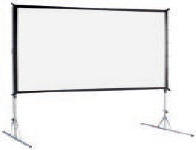
Fastfold |
|
|
Projection Screens for Rent |
| 9' x 12'
Fastfold Screen |
| 9' x 12'
Fastfold Screen Truss |
| 10' x 10'
Fastfold Screen |
| 10.5' x 14'
Fastfold Screen |
| 10.5' x 14'
Fastfold Screen Truss |
| 12' x 12'
Fastfold Screen |
| 11' x 31'
Fastfold Screen |
| 12' x 16'
Fastfold Screen Truss |
| 15' x 15'
Fastfold Screen |
| 15' x 20'
Fastfold Screen |
| 16' x 16'
Fastfold Screen |
| 16' x 21'
Fastfold Screen |
| Dress kits
are same price as screens |
|
| |
| |
| |
| |
|
|
KEY FEATURES
The following features are
found in all or selected SANYO LCD projectors. Check the
individual product listings on the following pages for
specific model information
Network Control &
Administration
Sanyo offers advanced tools for network control and
administration of select Large-Fixed, Fixed, and Portable
series projectors. Through a CAT5 LAN connection using the
IP addressing scheme, projector functions such as power
status, lamp status, input mode, signal condition,lamp-use
time, etc. can be monitored using a web browser.No
additional application software is needed.
When abnormalities such as a lamp failure or power
failure occur,
an E-mail Alert message can be sent to the registered
E-Mail addresses. An Automatic Timer function can turn on or
off a series of projectors at a specified day, date and
time. With Multi-Control, a single computer can control and
setup multiple projectors at the same time. RS-232 control
systems may be used in parallel with these Sanyo network
control components.
6500°K Color Optical
System
Select models utilize a newly developed 6500°K color
temperature optical system for more realistic color
reproduction. This color-focused design makes these
projectors highly suitable for digital cinema applications.
Color Management
Select Sanyo projectors offer Color Management solutions
allowing for changes to both color phase and color level to
obtain perfect color reproductions. With the Real Color
Manager system, white balance adjustments and gamma
correction are made from a PC using the included image
adjustment software by simply comparing the on-screen image
to a printed color chart.
With the Color Management System on select portable units,
only the small area surrounding the selected color is
changed without affecting other colors or adjustment items
such as Tint or White Balance.
Wireless Imager
Sanyo's Wireless Imager technology enables real-time
capture, compression, and transfer of image data from a PC
to a projector through a wireless LAN card. Image data can
be transferred from one PC to a projector, or from multiple
PC's to a projector through a wireless access point. On
select Wireless Imager modules, using the Network Viewer
Mode and its application software, image data can be called
up from a network server, converted and
presented on the wireless-networked projector, from a PC
connected to the network, Images being shown by the
projector can be viewed simultaneously on the networked PC.
Additionally, built-in control software allows for wireless
control of projector functions by a PC using a web browser.
Presentation Viewer
Sanyo's optional presentation viewer module allows images
stored on a Compact Flash memory card to be shown directly
from the projector. Media Card Imager ( MCI) software, also
included, enables the user to quickly and easily convert any
PowerPoint presentation into a series of JPEG files and save
them to the memory card.
Multi-Versatile Platform
A wide array of connectivity options is available with Sanyo
projectors featuring the Multi-Versatile Platform (MVP).
Detachable interface panels including inputs for HD-SDI,
SD-SDI, Faroudja™ video processing, DVI, 5-BNC, D-Sub15,
Video Y/C and S-Video can be used in varying combinations to
meet the source input needs for most any situation.
Faroudja Interface Board
Sanyo's Faroudja™ Interface Board, for use with projectors
featuring the Multiversatile Platform (MVP), processes all
incoming video signals using 3 Faroudja™ video processing
IC's as well as Sanyo's new IC for 3D Y/C separation.
Jitter-free video performance, improved depth perception,
automatic 3:2 pulldown, the elimination of objectionable
staircase artifacts, and near-HD quality images are the
result.
New Progressive IC with
2-3 Pulldown
A newly developed progressive integrated circuit provides
highly improved playback of moving images. 1080 interlaced
signals are converted into progressive signals while 2-3
pulldown doubles the resolution of images from DVD playback.
Efficient Lamp Management
System
Sanyo's Efficient Lamp Management System monitors and
controls each individual lamp on our multiple-lamp
projectors. Each lamp's status and cumulative hours of use
can be displayed on-screen and, if a lamp expires, the
fail-safe feature automatically switches to the remaining
good lamps to keep the projector running. When selected, the
half-brightness mode shuts down half of the projector's
lamps to maximize lamp life when full brightness is not
required.
New X-Y Digital Keystone
Correction
Sanyo's Digital Keystone Correction feature compensates for
angled projector placement by digitally and mathematically
interpolating an image's pixels, correcting keystoned
(trapezoidal) images. Most Sanyo projectors offer digital
keystone correction, while some models now offer Sanyo's new
X-Y Digital Keystone Correction, which corrects keystoning
both vertically and horizontally.
X-Y Power Lens Shift
Select SANYO LCD projectors offer power lens shift to aid in
greater placement flexibility. Many units now offer X-Y lens
shift, which moves the lens both vertically and
horizontally. Power lens shift also aids in the
twin-stacking of two projectors, easily aligning the images
from both projectors with virtually no geometric distortion.
HDTV Compatible
Selected SANYO projectors are High Definition Television
(HDTV) compatible, accepting the 1080i, 1035i, 720p, 575p,
575i, 480p and 480i HDTV resolution standards.
Optional Lenses
A wide range of optional lenses is available for many SANYO
LCD projector models in our Large Fixed, Fixed and Portable
model classes. SANYO's line of optional lenses offer
outstanding clarity along with increased placement
flexibility.
One-Touch Interchangeable
Lenses
Sanyo's new One-Touch lens system makes installation and
removal our optional lenses a snap. Select Large-Fixed and
Fixed models utilize our new One-Touch interchangiable
lenses mount adapters that attach to the lenses, allowing
for quick and easy lens swapping. Select Portable projectors
are equipped with a new bayonet -style lens mount system
that eliminates wired connections for the zoom and focus
motors.
Eco Mode
Select Sanyo projectors come equipped with our new Eco Mode
system that effectively lowers the projector voltage,
reducing power consumption and fan noise, when optimal
brightness is not required.
|
|
|